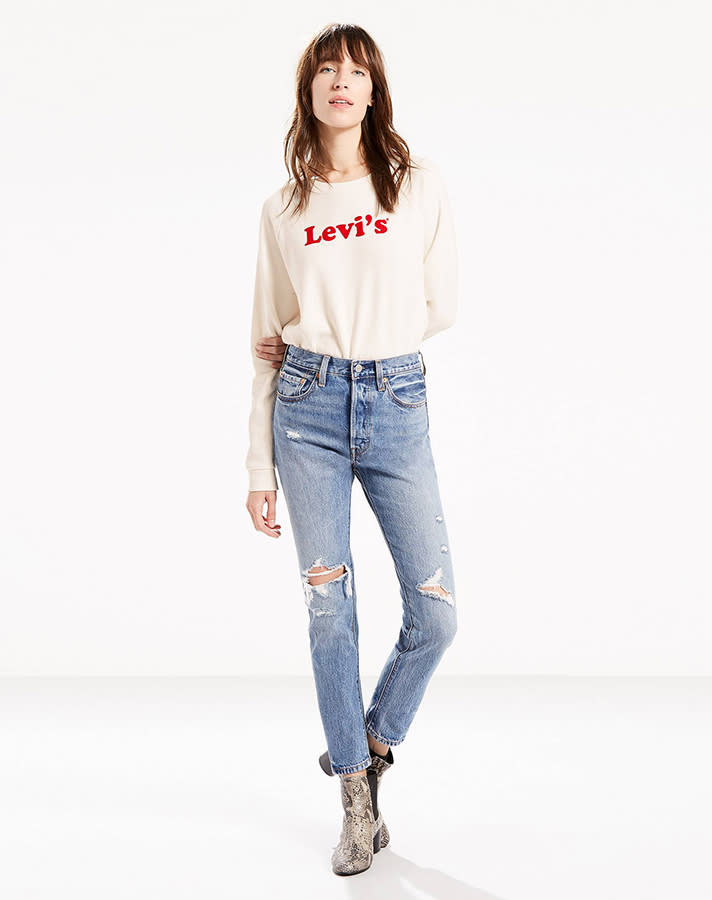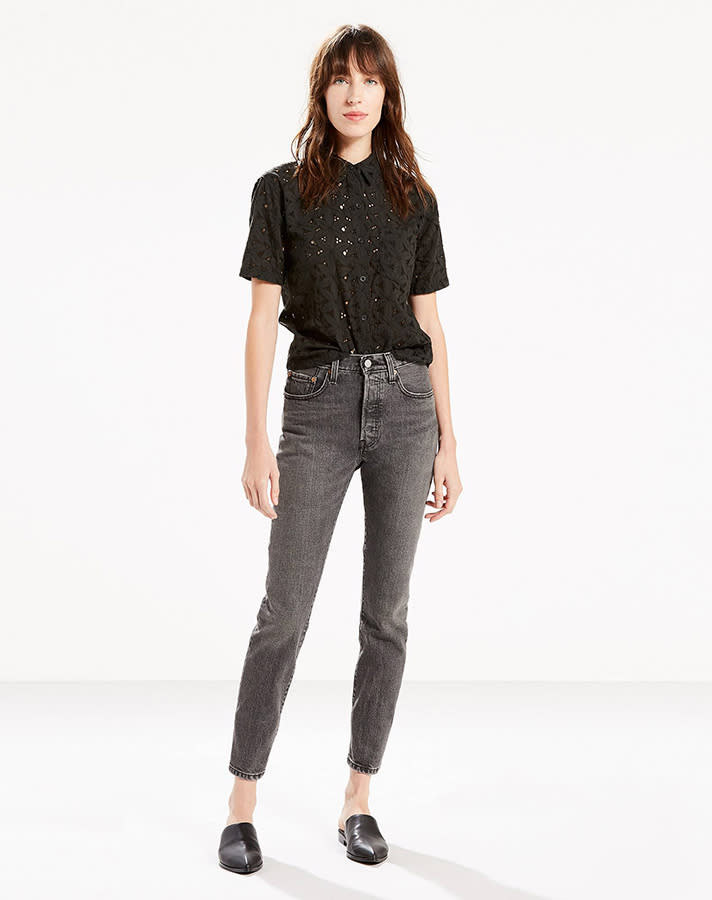How to Find Levi’s That Actually Fit

Shopping for jeans often inspires a level of dread usually reserved for trying on swimsuits—which is a little strange, when you think about it. After all, you’re not forced to strip down to basically nothing and evaluate the relative merits of a few strips of stretchy fabric under unforgiving fluorescent lighting. They’re just jeans.
But still, I get it: Finding a pair you love usually means trying on and rejecting a few dozen that you don’t. Ones that cinch your waist like a vise grip or require CrossFit-level upper-body strength to pull over your thighs. Ones that may say they’re the same size as a dozen pairs you already own, but are clearly made to fit another body entirely.
More from StyleCaster
MORE: 50 Foolproof Ways To Wear Your Favorite Pair of Jeans
Such is the menace of inconsistent sizing, but since that’s not likely to be resolved any time soon, the smartest thing to do is arm yourself with as much information as possible so you can cut down on the dressing room agony (or living room agony, if you’re the online shopping type.)
From talking with friends and colleagues, one brand we’ve all found particularly challenging in the fit department is Levi’s—perhaps because every last one of us has been bitten by the vintage-cut-denim bug in recent years. While every cool girl we follow on Instagram seems to have a tidy collection of well-worn 501s and 505s, figuring out the vintage equivalent to your modern size can be notoriously headache-inducing, especially when you’re doing your browsing on eBay or Etsy. And even buying brand new doesn’t totally eliminate the guesswork; a coworker has developed a habit of buying three sizes at a time to ensure at least one of the bunch will fit.
Click here to read the full article.
So, what gives? And is it possible to find your perfect pair without endless trial and error?

According to Chief Product Officer Karyn Hillman, the fit discrepancies in vintage Levi’s are only natural. “Every pair of vintage jeans is unique and a lot of that character can be attributed to its past life,” she says. “Denim molds and takes the shape of the previous owner’s body—if the original owner of one pair of vintage jeans had a small waist and wider hips, the seat may be more stretched out on that pair than on another pair with the same ticket size that was worn by someone with slim hips and a fuller waist.”
The rule of thumb is to go up two sizes from your modern size when buying vintage, but she cautions not to get too hung up on the waist size: “You might have to go up or down depending on each pair and how you want to wear them—whether you’re looking for a super snug fit or something more relaxed and ‘boyfriend-y.'” (My favorite vintage 501s are three sizes bigger than my usual jeans, but for someone with a curvier waist-to-hip ratio, going up just two sizes may make for a closer fit.)
Also pay attention, if you can, to the era in which the jeans were produced, as that can influence the cut. “In general, the fit of the 501 has evolved over the decades in keeping with the style of the time – legs get narrower or wider and rises fluctuate slightly depending upon the year,” says Hillman. “Currently we are loving the 501s from the ’80s and ’90s, which have a higher rise and a nipped-in waist.” In general, older jeans will be stiffer have a higher rise, though again, that can vary with prior wear.

In December, the heritage brand launched the 501 Skinny, a modern reboot on the vintage classic, with a slimmer leg and cropped inseam, designed to better fit the women scooping up thrifted pairs in droves. “Though Levi’s started making jeans specifically for women in 1934, the vintage styles that are most popular today—the 501, 505, and 517—were originally introduced as men’s fits,” says Hillman. “While both women and men bought and loved these styles from the men’s line, we use a different sizing method today for our women’s products that allows us to provide a more consistent and precise fit.”
While generally this is true—you shouldn’t need to go up three sizes when buying a new pair—take note of the composition and online reviews before assuming your “normal” size will fit. Even among the new 501s, certain washes are 100 percent cotton, while others are 99 percent cotton, 1 percent elastane—and per the reviews, that 1 percent makes a big difference: you may want to size up one or two sizes with the non-stretch versions. (I had a similar experience with the Wedgie Fit jean the brand introduced last year, and went up a size for a less constricting fit.)
“The ‘feel’ of a jean with little to no stretch will likely feel a bit slimmer because it does not flex or give like the advanced stretch denim fabrics being used today,” explains Hillman. “Mid-to-high stretch denim fabrics work really well for a great range of shapes and curves, as they are a bit more flexible and forgiving. But it’s really all about preference.”
So no, you may not be able to eliminate the try-on process entirely—but hopefully you can feel a little more prepared before hitting “add to cart” on your next pair.
Best of StyleCaster

